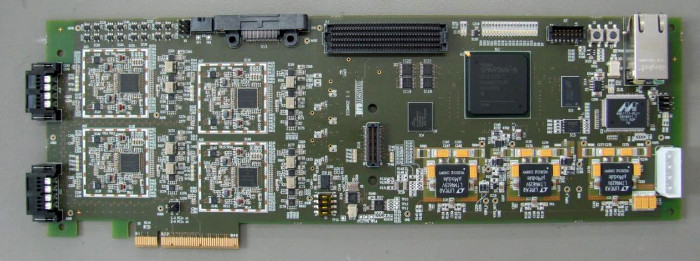Low cost GSM networks created using open source technologies have been increasingly making the news, but what open source options are available for LTE?
Prior to the advent of software such as OpenBTS and OpenBSC, many would have deemed GSM to be too complex and arcane a technology for a community of open source developers to tackle. However, those who thought this to be the case have, like early Linux detractors, since been proved wrong thanks to a growing community of talented engineers who are committed to open source.
As a result of the determined efforts of those engineers, it is now possible to create GSM networks from scratch for a fraction of the cost of proprietary solutions, and to integrate open source GSM technologies within existing networks for significant cost savings, amongst many other benefits.
Next we’ll take a look at four open source projects which are working on LTE implementations.
OpenLTE
Image source: OpenLTE project.
OpenLTE is developed by Ben Wojtowicz and the first release was made in late 2011. At present GNU Octave code is available for test and simulation of downlink transmit and receive functionality, along with uplink PRACH transmit and receive. In addition, GNU Radio applications are available for downlink transmit and receive to and from a file, and for receive use with a selection of SDR hardware. More recently, a simple eNodeB application has been added.
gr-lte
GNU Radio Companion
The gr-lte project aims to provide a modular environment for an LTE downlink receiver, achieving this by providing signal processing blocks within the GNU Radio framework and its accompanying IDE, GNU Radio Companion. Although gr-lte is published under an open source licence it looks as though MATLAB may be a software dependency. However, there is also a note about Python code — specifically, Numpy/Scipy — as a potential replacement for the MATLAB code.
Open Source Long-Term Evolution (LTE) Deployment
Image source: LTE waveform implementation status documentation, OSLD project.
The principle stated objective of the OSLD project is “promoting open-source SDRs and shared development of software for wireless communications systems”, and in support of which this includes providing “a modular, open-source LTE library for building base stations and mobile terminals on general-purpose processors”.
The OSLD project website links to the GitHub repository for another project called ALOE (Abstraction Layer and Open Operating Environment), which provides the DSP framework that is being used to develop an open source LTE system. It would appear as though this includes support for a number of downlink channel types and with hard real-time capability on Linux via Xenomai, and with some channel models for both MATLAB and GNU Octave being included.
OpenAirInterface
OpenAirInterface 4G reference platform protocol stack (source: twiki.eurecom.fr)
OpenAirInterface is an open source platform and open forum that is concerned with air interface standards such as 802.16m and LTE. Here the focus is not on developing solutions that are deployment-ready, and is rather instead on spectral, algorithmic and protocol efficiency research, enabling demonstrators which are based on high performance embedded architectures, and the test, validation and analysis of wireless systems.
Development of OpenAirInterface is led by graduate school and research centre, EURECOM, who also operate a laboratory facility with a multi-antenna cell site that is used in FP7 research projects.
In addition to the OpenAirInterface software, EURECOM have developed a PCIexpress card which integrates 4x LMS6002D transceivers, along with an FPGA which is used to host an embedded system that is based around the LEON3 microprocessor (open source, 32-bit and SPARC v8 architecture). At present the ExpressMIMO2 board design is not open source, however, hardware is being made available at cost to partner R&D projects.
Promising signs
As one might expect, open source LTE implementations are earlier in their development and/or not as complete or with more of a focus on research use. However, as open source GSM technology gains further validation in the field and there is an increasing industry awareness of the opportunities it affords, momentum is certain to gather behind open source LTE efforts also. And with the development of four open source implementations underway — which is not counting various network simulation and analysis tools — we are off to a great start!
Top image: an ExpressMIMO2 card (source: openairinterface.org)




